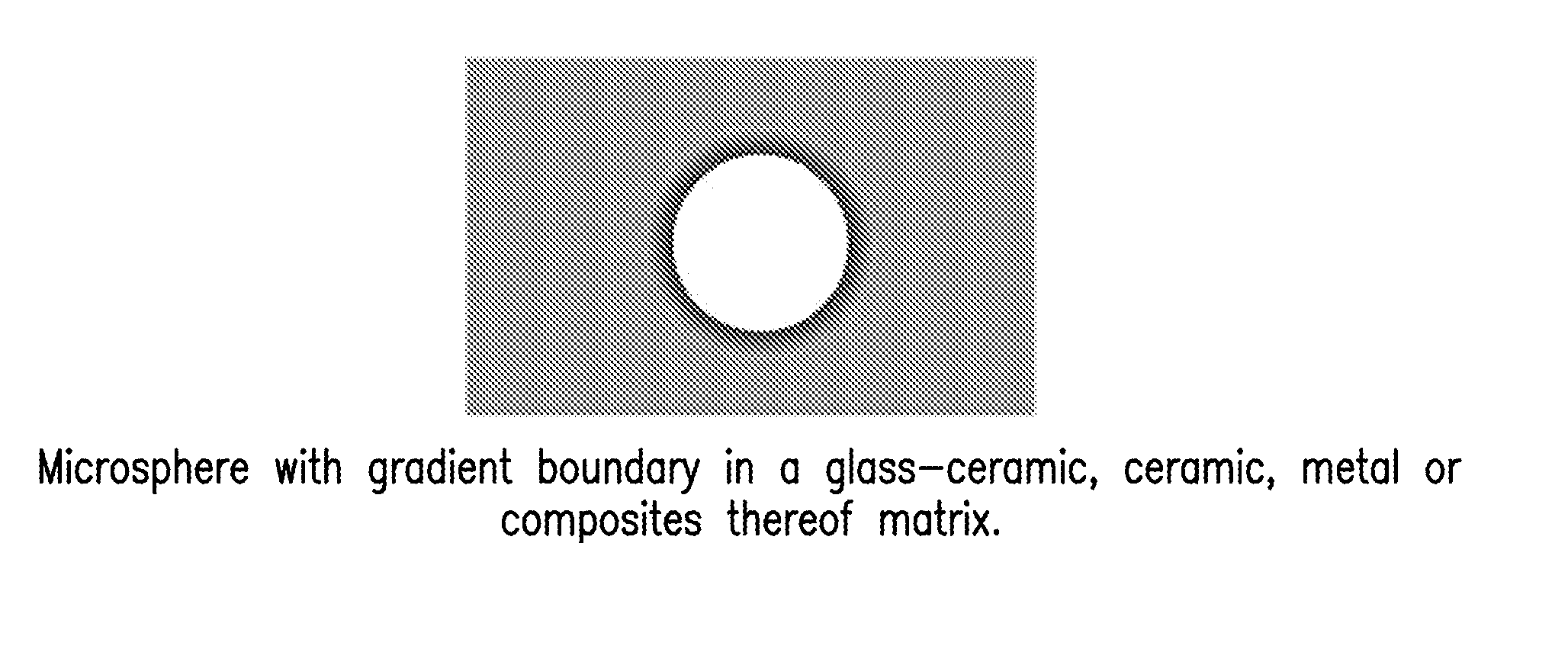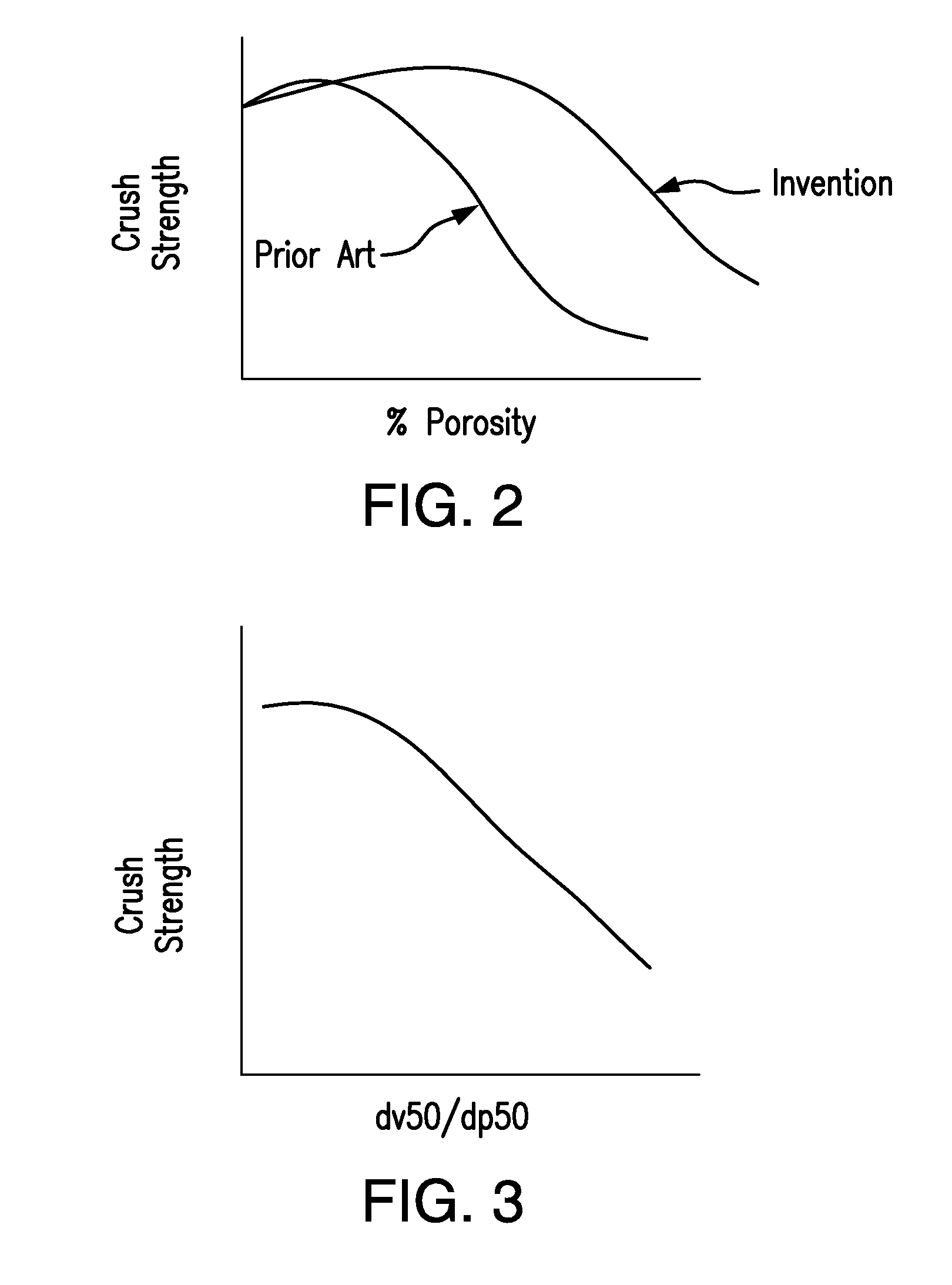Ceramic Particles With Controlled Pore and/or Microsphere Placement and/or Size and Method Of Making Same
a ceramic particle and microsphere technology, applied in the direction of sealing/packing, earthwork drilling and mining, wellbore/well accessories, etc., can solve the problems of reducing the overall strength of the ceramic particle, reducing the strength of the resulting pore containing ceramic particle, and conventional proppants offered for sale exhibit exceptional crush strength but also extreme density, so as to achieve the effect of superior balance of crush strength and/or buoyancy
- Summary
- Abstract
- Description
- Claims
- Application Information
AI Technical Summary
Benefits of technology
Problems solved by technology
Method used
Image
Examples
example 1
[0515]SiC-cordierite composites were made using ceramic processing. SiC powder (Grade 0.7 μm, Electro Abrasives Corporation, 701 Willet Road, Buffalo, N.Y. 14218) with an average particle size of 0.7 μm and a surface area (BET) of 10 m2 / g, and cordierite powder (KC-300, TradeGroup Asia Limited, Unit 2703 Golden Centre, 188 Des Voeux Road-Central, Hong Kong) with a particle size of 44 μm (−325 mesh), were employed. A series of test samples were prepared with different percentages of SiC powders homogenously mixed with the cordierite. The cordierite powder was attrition-milled to an average particle size of around 2 μm, and then mixed with the SiC powders in deionized (DI)-water, and ball-milled in a plastic jar with high purity alumina media, for 4 hours. The slurry was dried in an oven at 125° C. for 4-8 hours and the dry powder was sieved through a −80 mesh screen. Pellets Φ0.5″×0.2″ uniaxially were pressed at 12 MPa and sintered at 1230° C.-1270° C. from 4 h to 6 h in air. After t...
example 2
[0521]Using the same process as in Example #1, 10% wt of SiC powder was mixed with the balance of mullite powder, MULCOA 47® (C-E Minerals, King of Prussia, Pa.). The pellets were sintered at 1450° C. for 2 hours in air. The Table below shows the specific gravity, microsphere total volume and crush strength measured.
MicrosphereplacementMaterialsSGand / or sizeStrength psi10% SIC25-Mullite2.4714.3%9570
example 3
[0522]In this example, the effects of using pore formers in proppants were studied. In particular, a pore former, silicon carbide, was used in forming proppants. As a comparison, some proppants were prepared without pore formers. Specifically, proppants were prepared based on the components listed for each sample. In each case, the materials used to form the proppants were in powder form co-milled together in an attrition mill as a wet slurry (using water), and sprayed onto cenosphere templates (TG 425 grade template) to form green bodies. The sintering conditions (fired temperature) and time of sintering are provided for each sample. Prior to milling, each starting material had a size of 80 mesh or less. For the green bodies for each sample, a general mesh size of 300 to 500 microns was targeted with a median size of 430 to 450 microns for the green body. As can be seen by the results below, the use of a pore former, had a significant effect in reducing specific gravity, with only ...
PUM
| Property | Measurement | Unit |
|---|---|---|
| Temperature | aaaaa | aaaaa |
| Temperature | aaaaa | aaaaa |
| Fraction | aaaaa | aaaaa |
Abstract
Description
Claims
Application Information
 Login to View More
Login to View More - R&D
- Intellectual Property
- Life Sciences
- Materials
- Tech Scout
- Unparalleled Data Quality
- Higher Quality Content
- 60% Fewer Hallucinations
Browse by: Latest US Patents, China's latest patents, Technical Efficacy Thesaurus, Application Domain, Technology Topic, Popular Technical Reports.
© 2025 PatSnap. All rights reserved.Legal|Privacy policy|Modern Slavery Act Transparency Statement|Sitemap|About US| Contact US: help@patsnap.com



